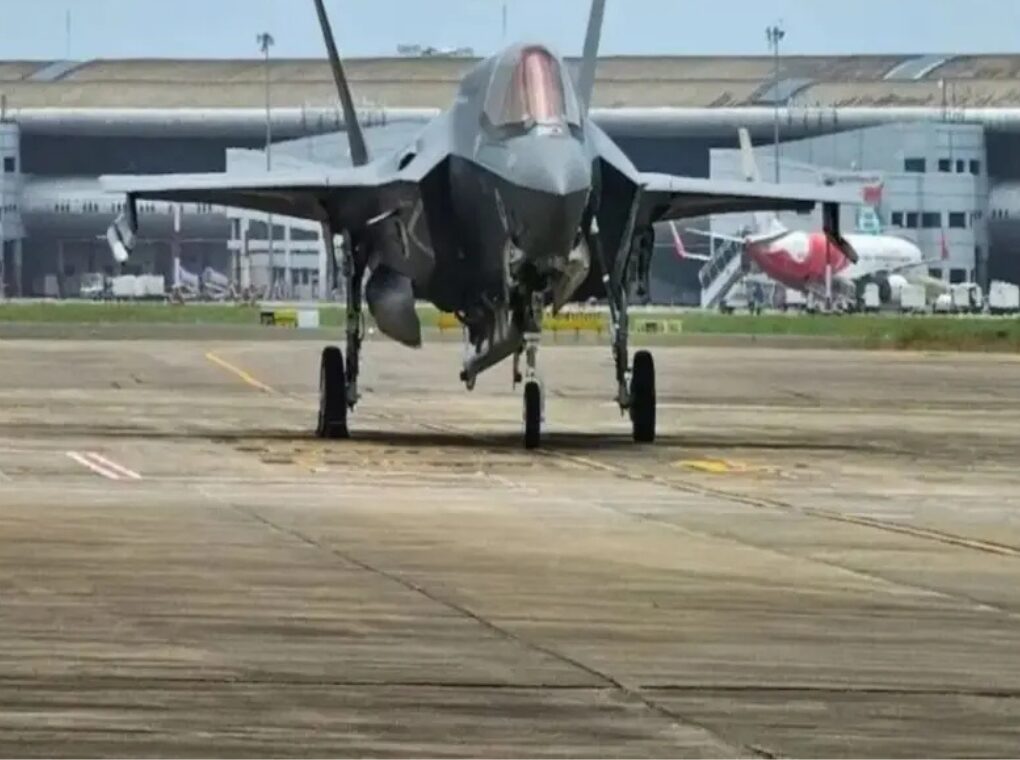In a repeat of an earlier incident, another British Royal Air Force F-35B stealth fighter jet made an emergency landing on Sunday at Kagoshima Airport in Japan after experiencing a mechanical malfunction mid-air.
According to airport officials and reports from Kyodo News, the emergency landing took place at approximately 11:30 a.m. local time, forcing the closure of the runway for about 20 minutes and causing delays to several commercial flights.
The incident occurred during a high-profile joint military exercise involving the UK Royal Navy, Japan’s Maritime Self-Defense Force, and the United States military. This multinational drill, which began on August 4 and is scheduled to continue until Tuesday, saw the deployment of a UK aircraft carrier strike group to the western Pacific, signaling an increased focus on regional security cooperation.
The F-35B jet involved in the emergency landing was operating from the Royal Navy’s aircraft carrier, HMS Prince of Wales, according to Japanese broadcaster NHK. The stealth fighter, known for its advanced 5th-generation capabilities and unique short take-off and vertical landing (STOVL) technology, is a critical asset in modern naval aviation.
This marks the second emergency landing of a UK-operated F-35B in less than two months. The previous incident occurred on June 14 at Thiruvananthapuram Airport in Kerala, India, where a British F-35B had to make an emergency landing due to a hydraulic fault. That aircraft remained grounded for over five weeks, during which it became a viral sensation and tourist attraction, inspiring countless memes and online jokes.
Following that event, the British High Commission publicly thanked Indian authorities for their assistance during repairs. However, this recent emergency in Japan has again brought attention to the operational challenges faced by the UK’s F-35B fleet.
International Reactions and Media Responses
The emergency landing has not gone unnoticed by international media, particularly state-run outlets in China and Russia. Russian outlet Sputnik India took to social media to mock the UK’s F-35B fleet, sarcastically suggesting the jets are “collecting emergency landings like souvenirs.”
Similarly, China’s state-run Global Times editorialized that these malfunctions highlight the “overly complex systems and highly demanding maintainability” of the F-35B jets. The commentary noted that British sailors might be struggling with the challenges of maintaining such advanced aircraft during extended deployments far from home ports.
The Global Times also referenced the Kerala incident, suggesting the prolonged grounding and resulting public mockery raise serious questions about the reliability of such cutting-edge military technology.
In a pointed critique, the Chinese publication argued that the UK’s carrier strike group deployments are largely dependent on U.S.-made equipment and follow American global strategic interests.
It further claimed that Britain’s naval operational capabilities “are no longer what they once were,” urging the UK government to reconsider its reliance on U.S. military platforms amid these operational setbacks.
The F-35B: Advanced Yet Challenging
The F-35B Lightning II, manufactured by Lockheed Martin, is a fifth-generation stealth fighter jet featuring state-of-the-art sensors, avionics, and the unique ability to take off from short runways and land vertically. This STOVL capability makes it especially suited for operations from aircraft carriers without catapult launch systems.
However, the F-35 program is known for its technological complexity and high maintenance demands, which sometimes translate into operational difficulties in harsh or distant environments. The recent incidents involving British F-35Bs highlight the challenges faced by navies operating such sophisticated aircraft far from their home bases.
The emergency landing of the UK Royal Air Force’s F-35B in Kagoshima underscores the technical and logistical hurdles that come with deploying cutting-edge military hardware in complex joint operations.
While the aircraft’s capabilities remain unmatched in many respects, these recent malfunctions have sparked international attention and criticism, adding pressure on the UK and its allies to ensure reliability and maintain operational readiness in an increasingly contested global security environment.
